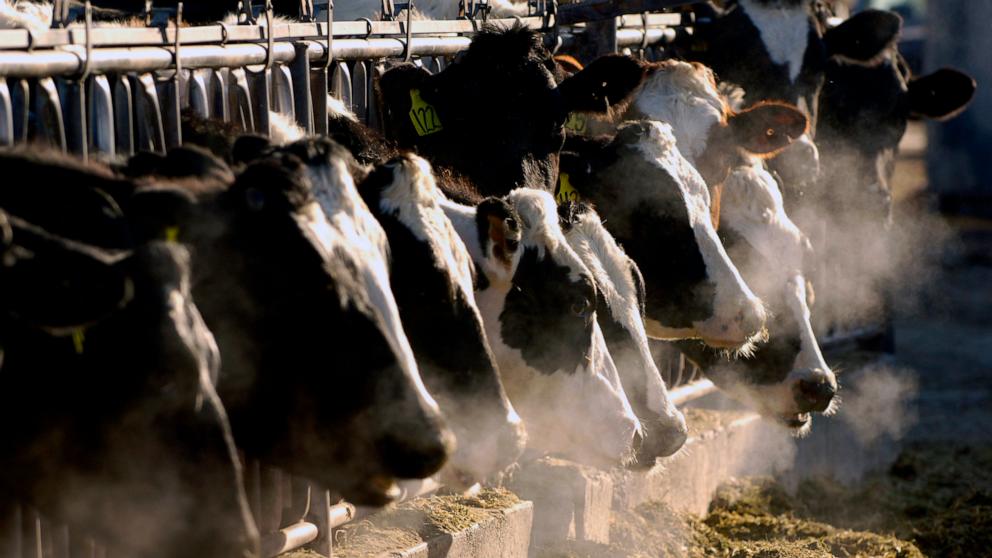The CDC says the current risk to the general public is low.
May 24, 2024 2:37 PM
• 5 min read
The US Centers for Disease Control and Prevention (CDC) said in a summary on Friday that it was preparing for “potential increased risks to human health” after an outbreak of avian influenza among dairy cows and two confirmed cases in humans.
But federal health officials also said the risk of bird flu, also known as avian influenza, infecting people in the United States is currently low and there is no evidence of person-to-person transmission in the United States.
Federal and state public health officials said in late March they were investigating an illness that has spread among mostly older dairy cows in Kansas, New Mexico and Texas, causing symptoms including reduced milk production and loss of appetite.
The first case was identified in a farm worker in Texas, US, and the second case was identified in a farm worker in Michigan who was regularly exposed to avian influenza transmitted by livestock.
According to the CDC, the only symptom the two patients experienced was redness in the eyes, and both have since recovered.
Holstein cows feed through a fence at an Idaho dairy farm on March 11, 2009. Charlie Litchfield/AP
As of May 22, more than 350 people who had contact with dairy cows or infected raw milk were being monitored. According to the CDC, the Michigan cases were identified through routine surveillance of farm workers. Farm workers and people who work in agriculture are at highest risk for avian influenza.
There is currently no evidence that avian influenza can be transmitted from person to person.
“Currently circulating influenza A(H5N1) viruses are not capable of spreading easily from person to person or from person to person; however, it is possible that influenza A(H5N1) viruses could mutate to become more easily and more efficiently transmitted from person to person, potentially causing a pandemic,” the CDC wrote in its summary.
As federal health officials continue their preparation efforts, they are working to package about 4.8 million doses of avian flu vaccine from the national stockpile in case it is needed, said Dawn O'Connell, assistant secretary for preparedness and response at the Department of Health and Human Services.
“This action further strengthens our posture of preparedness,” she said this week.
Dr. John Brownstein, an epidemiologist and chief innovation officer at Boston Children's Hospital and an ABC News contributor, said the preparation efforts are an example of the government being proactive rather than reactive.
“Public health has to always be one step ahead,” he said. “Public health, when it's doing its best, is being proactive and actively looking for potential indicators and using data from all methodologies because that's when it can identify when something has changed. The public doesn't need to feel anxious while public health remains vigilant and is dedicating significant resources.”
HHS worked with manufacturing partners to continue production of the seasonal flu vaccine in a process called “fill and finish,” without interrupting production. O'Connell said the vaccine is “a good match for the H5N1 strain that is currently circulating.”
The federal government has not indicated any cause for concern at this time, and the CDC says it is important to continue strengthening influenza preparedness networks through the spring and summer, including by increasing the number of specimens available for further testing, continuing surveillance, and encouraging clinicians to consider avian influenza when examining patients with conjunctivitis or respiratory illness following exposure to agricultural or livestock products.
Additionally, remnants of the virus were found in milk samples, but tests showed that the virus had been inactivated by pasteurization.Raw milk is not pasteurized, and health officials have long warned against drinking it because it may contain bacteria that can make people sick.



